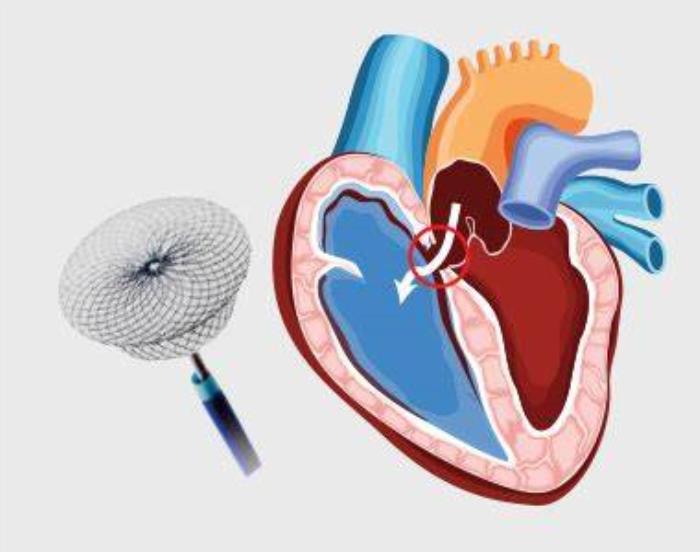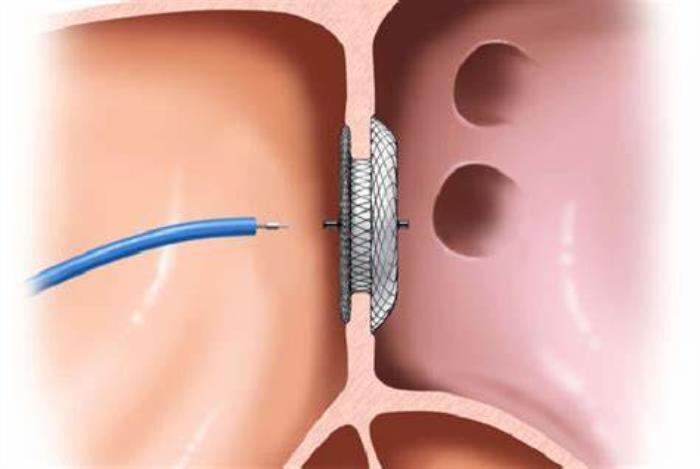Atrial Septal Defect (ASD) closure is a medical procedure designed to correct a congenital heart defect characterized by an abnormal opening in the atrial septum, the wall that separates the heart's two upper chambers. This defect can lead to an increased blood flow to the lungs and strain on the heart, potentially resulting in serious complications over time. Closure can be performed using various techniques, with transcatheter closure being the most common and least invasive option, allowing for quicker recovery and less trauma compared to traditional open-heart surgery.
The Importance of Choosing the Right Closure Device
Selecting the appropriate closure device for ASD is critical to ensuring the success of the procedure and the long-term health of the patient. Factors influencing this decision include the size and location of the defect, the patient's age, and any associated anatomical considerations. The right device can effectively occlude the defect, minimize complications, and reduce the risk of future cardiovascular issues. Therefore, a thorough assessment by a cardiologist is essential to determine the most suitable device for each individual.
Overview of ASD Closure Devices: A Comparative Guide
There are several types of closure devices available for ASD repair, each with distinct designs and mechanisms of action. These devices are categorized based on their application method—surgical or percutaneous—and their structural characteristics. Key factors to consider when comparing devices include ease of deployment, flexibility, and long-term outcomes. Understanding these differences can help both healthcare providers and patients make informed decisions regarding the most effective closure method.

Transcatheter Closure Devices: A Minimally Invasive Option
Transcatheter closure devices are gaining popularity due to their minimally invasive nature, allowing for the closure of ASDs without the need for open-heart surgery. This approach involves the insertion of a catheter through a small incision, typically in the groin, which is guided to the heart under imaging guidance. The device is then deployed to occlude the defect. The benefits of this technique include shorter recovery times, reduced hospital stays, and less postoperative pain compared to traditional surgical methods, making it an attractive option for many patients.
Amplatzer Septal Occluder: Design and Features
The Amplatzer Septal Occluder is one of the most widely used devices for ASD closure. Designed with a double-disc configuration, it provides a secure fit against the atrial septum, minimizing the risk of residual shunting. Its flexible structure allows for adaptation to various defect sizes and shapes, making it versatile for different patients. The Amplatzer device is made from biocompatible materials, which promote integration with the body, and it has a proven track record of efficacy and safety in clinical use.
Gore HELEX Septal Occluder: Unique Aspects and Applications
The Gore HELEX Septal Occluder features a unique, self-expanding design that allows for easy deployment and positioning. It is constructed from a combination of polyester and a nitinol frame, offering a high degree of flexibility and conformability to the septal anatomy. This device is particularly advantageous for patients with larger ASDs or those requiring a closure that accommodates varying septal configurations. Clinical studies have demonstrated its effectiveness in reducing shunt flow and improving overall cardiac function.
Figulla Flex II Septal Occluder: A Versatile Solution
The Figulla Flex II Septal Occluder is another innovative option for ASD closure, designed for optimal versatility and performance. Its flexible and conformable structure allows it to adapt to different anatomical variations within the heart, making it suitable for a wide range of defect sizes. The device is delivered via a catheter, facilitating a minimally invasive procedure while ensuring a secure closure of the defect. Additionally, the Figulla Flex II has shown positive outcomes in terms of safety and efficacy, making it a valuable choice in the realm of congenital heart defect management.
Device Selection Criteria: Factors Influencing Choice
Choosing the appropriate device for ASD closure involves multiple criteria, including the size and type of the atrial septal defect, the patient's age and health status, and the anatomical features of the heart. Factors such as the patient's overall cardiovascular condition, presence of other cardiac anomalies, and the specific anatomical characteristics of the defect play a significant role in device selection. Consultation with a cardiologist specializing in congenital heart defects is essential to ensure the best outcome.
Advantages of Transcatheter ASD Closure Over Surgical Options
Transcatheter ASD closure offers several advantages compared to traditional surgical methods. It is less invasive, requiring only a small incision, which typically results in reduced recovery time and lower complication rates. Additionally, patients often experience less pain and a shorter hospital stay. This approach allows for quicker return to normal activities, making it a more appealing option for many individuals, especially those who are elderly or have other health conditions.
Potential Complications Associated with ASD Closure Devices
While ASD closure devices are generally safe, potential complications can arise. These may include device migration, thrombosis, or the formation of arrhythmias. In rare cases, perforation of nearby structures can occur. It is crucial for patients to be aware of these risks and to follow up with their healthcare provider regularly to monitor for any adverse effects after the procedure.

The Role of Imaging in Device Placement and Assessment
Imaging plays a critical role in the successful placement of ASD closure devices. Techniques such as echocardiography, fluoroscopy, and sometimes cardiac MRI or CT scans are utilized to guide the cardiologist during the procedure. These imaging modalities help ensure accurate positioning of the device, assess the size of the defect, and evaluate the surrounding cardiac structures to minimize risks during placement.
Post-Procedure Monitoring of Closure Devices
After ASD closure, patients are monitored closely to ensure the device is functioning correctly and that there are no complications. This may involve follow-up echocardiograms to assess device placement and function, as well as monitoring for any signs of arrhythmia or other complications. Regular follow-ups are essential for maintaining heart health and addressing any concerns promptly.
Long-Term Outcomes and Efficacy of Closure Devices
Research shows that transcatheter ASD closure devices have high success rates and favorable long-term outcomes. Many patients experience significant improvements in symptoms and overall heart function. Long-term studies indicate low rates of residual shunting or complications, highlighting the effectiveness of these devices in providing lasting solutions for patients with ASD.
Advances in Device Technology: What's New?
Recent advancements in ASD closure technology have led to the development of new devices that are more adaptable to various defect types and sizes. Innovations include materials that promote faster healing and reduce the risk of complications, as well as devices that can be retrieved if necessary. Ongoing research continues to enhance the efficacy and safety of these devices, providing patients with more options for treatment.
Pediatric Considerations: Devices for Children with ASD
When treating children with ASD, device selection is particularly critical due to their unique anatomical and physiological considerations. Pediatric devices are specifically designed to accommodate smaller anatomical structures and ensure optimal outcomes as the child grows. It’s vital that healthcare providers carefully assess the child's condition to choose a device that will provide effective closure without compromising future growth or heart function.
Patient Experiences: Testimonials on Device Performance
Hearing from patients who have undergone ASD closure using various devices can provide valuable insights. Many report positive outcomes, including improved exercise tolerance and overall quality of life. Testimonials often highlight the minimally invasive nature of the procedure and the quick recovery times, which contribute to high satisfaction levels among patients.
Device Retrieval: What Happens if a Device Needs to be Removed?
In rare cases, it may be necessary to retrieve an ASD closure device due to complications such as migration or inadequate closure. The retrieval process typically involves catheter-based techniques similar to the initial placement, allowing for the safe removal of the device without requiring open-heart surgery. Understanding this process can provide reassurance to patients and families regarding the management of potential complications.
The Future of ASD Closure Technology
The future of ASD closure technology looks promising, with ongoing innovations aimed at improving device design and function. Research is focusing on creating even more adaptable and user-friendly devices, as well as enhancing imaging techniques for better procedural outcomes. As technology advances, patients can expect safer and more effective options for ASD closure.
Patient Education: What to Expect with Your Device
Patient education is essential for successful outcomes with ASD closure devices. Individuals should understand how the device works, potential risks, and the importance of follow-up care. Educating patients on recognizing warning signs and symptoms of complications will empower them to take an active role in their recovery and heart health management.
The Role of Medications in Managing ASD Symptoms
Understand the role of medications in managing symptoms of ASD. This section discusses various medications prescribed to alleviate symptoms, the importance of adherence to treatment plans, and how they contribute to improved quality of life for those affected by ASD.
Conclusion: Making Informed Decisions About ASD Closure Devices
Making informed decisions about ASD closure devices involves understanding the various options available, the advantages and risks associated with each, and the importance of personalized care. By working closely with healthcare providers and considering factors such as lifestyle and health status, patients can select the best device for their needs, leading to improved outcomes and quality of life.
Best ASD Closure Surgery in India
The Best ASD Closure Surgery in India is a procedure designed to close a hole in the heart’s atrial septum, improving blood flow and overall cardiac health in patients with atrial septal defects.
Best ASD Closure Surgery Hospitals in India
The best asd closure surgery hospitals in india provide advanced facilities and specialized cardiac teams, ensuring comprehensive care from initial assessment to post-surgical recovery.
ASD Closure Surgery Cost in India
The asd closure surgery cost in india is affordable and transparent, offering patients high-quality care and a range of options to suit their needs.
Best ASD Closure Surgeons in India
The Best ASD Closure Surgeons in India are experts in congenital heart procedures, providing personalized care and a high success rate for patients with atrial septal defects.
FAQ
What are the most common types of ASD closure devices?
The most common types include occluders made from materials such as nitinol and polyester. These devices come in various shapes and sizes to accommodate different types of ASD.
How is the right closure device chosen for a patient?
The right closure device is selected based on the size and type of the ASD, the patient's age and health status, and imaging assessments performed before the procedure.
Are there any risks associated with using ASD closure devices?
Yes, risks include device migration, thrombosis, arrhythmias, and rare complications such as perforation of surrounding structures.
How long does an ASD closure device last?
ASD closure devices are designed to be permanent and typically remain in place for the patient’s lifetime, although long-term follow-up is necessary to monitor their function.
What should patients know about caring for their closure device?
Patients should follow their healthcare provider's instructions for follow-up appointments, report any unusual symptoms, and maintain a heart-healthy lifestyle to support overall well-being.